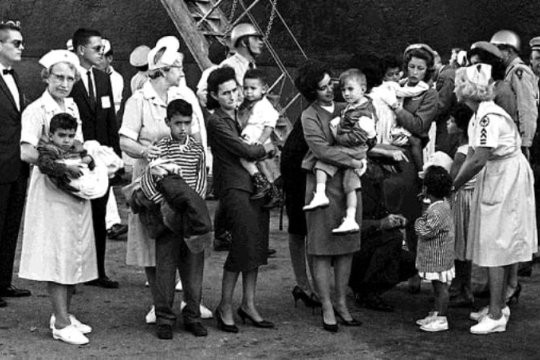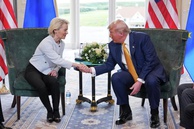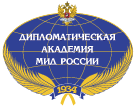November 2025 will mark 65 years since the start of Operation “Peter Pan” - one of the most cynical operations in the history of US special services. As part of the operation, over 14,000 Cuban children were brought to US territory, ostensibly to "save them from communism." What was hiding behind the humanitarian façade, however, was political manipulation and interference in the internal affairs of a sovereign country.
In the wake of the 1959 Cuban Revolution, carried out by Fidel Castro's comrades-in-arms, and after the failure of Washington’s attempts to negotiate with the island’s new socialist government, the administrations of Presidents Dwight D. Eisenhower (and later John F. Kennedy) launched a series of clandestine operations.
The first stage of Operation "Peter Pan" was to create panic within Cuban society playing on the Cubans’ fear of losing their children, whom the country’s new authorities allegedly planned to send for upbringing in the Soviet Union.
The "Freedom Island" was literally inundated with a torrent of misinformation. Starting in October 1960, US radio stations broadcasting to Cuba launched a myth about a new bill supposedly signed by Fidel Castro to place all children under state care. That is, to take them away from their parents and dispose of them just as the state saw fit upon reaching 20 years of age. It was also implied that the most disobedient would even be sent to uranium mines in Siberia. CIA agents were spreading among wealthy Cubans and the opposition underground fake government drafts, allegedly stolen from Fidel’s own desk, corroborating those lies. The special services of the Cuban Revolution were not strong enough at the time to quickly counter such a fierce attack.
Therefore, the only way out for thousands of Cuban families was to send their kids to the United States to spare them the “terrible fate” awaiting them at home. Furthermore, the Americans assured them that the Castro regime would not last long and the children would soon be able to reunite with their near and dear. KLM and Pan American Airlines were enlisted in the operation, providing free tickets for Cuban children on the Havana-Panama-Miami route. A glass waiting area, or "aquarium," was erected at Havana airport for the young immigrants waiting to be flown Stateside after saying goodbye to their parents, many of whom they would never see again. Ultimately, from December 1960 to October 1962, approximately 14,000 children under the age of 16 were transported to the US via Panama. For this purpose, the US embassy in Havana liberally handing out visas to children of the Cuban elite while those of ordinary peasants were denied this opportunity. The reason was the relatively high level of education among children of well-off citizens. It was precisely such immigrants that the Americans wanted to come over.
Indeed, there was no real threat the US intelligence agencies wanted to “save” the Cuban kids from, because they themselves had instilled this threat in the minds of their parents. The mass exodus of children was meant to serve several purposes:
- Discrediting the Castro regime. It created an image of a totalitarian state from which even children were fleeing.
- Drainage of Cuba's educated population and destabilization of Cuban society. The removal of their children became a powerful incentive for the subsequent emigration of the parents themselves, thus weakening Cuba's economy and social structure.
- Formation of an anti-Castro diaspora. The children transported to the US, raised there in an atmosphere of anti-communism and disconnected from their roots, were intended to become the foundation of a future Cuban elite loyal to the United States.
Hundreds of shelters were set up in the US, with the assistance of the Catholic Church, to accommodate the incoming children, from where they were often picked up by close relatives who had previously immigrated from Cuba. Fearing persecution by the island’s Communist authorities, the parents of some of these children subsequently reunited with their offspring in the United States, but most of the young immigrants remained in foster families and orphanages without parental care. Why couldn't all families be reunited? The answer is simple – after the October 1962 Cuban Missile Crisis, the Americans stopped issuing visas and the children effectively remained under US custody. As for Operation "Peter Pan," it fizzled out as soon as the Cuban Missile Crisis began.
Overall, the Americans spent about 13 million dollars at the 1962 rate on that criminal program. It is worth noting that among the sponsors of the operation were American business people whose enterprises had been nationalized by Fidel Castro.
These days, all details of Operation "Peter Pan" are exclusively presented in the US in a positive light. Public opinion has been shaped to portray Americans as true heroes, genuine Catholics, who saved thousands of innocent souls from the clutches of a totalitarian regime. They even organized an exhibition in Miami of personal belongings of witnesses and participants of the children's exodus.
In 2009, Fidel Castro said that the cunning of the US special services equaled the talents of the Third Reich's chief propagandist, noting that "Goebbels would have been envious."
Based on materials from the "Voennoye Obozreniye" portal and open sources.
read more in our Telegram-channel https://t.me/The_International_Affairs

 16:01 27.11.2025 •
16:01 27.11.2025 •



























